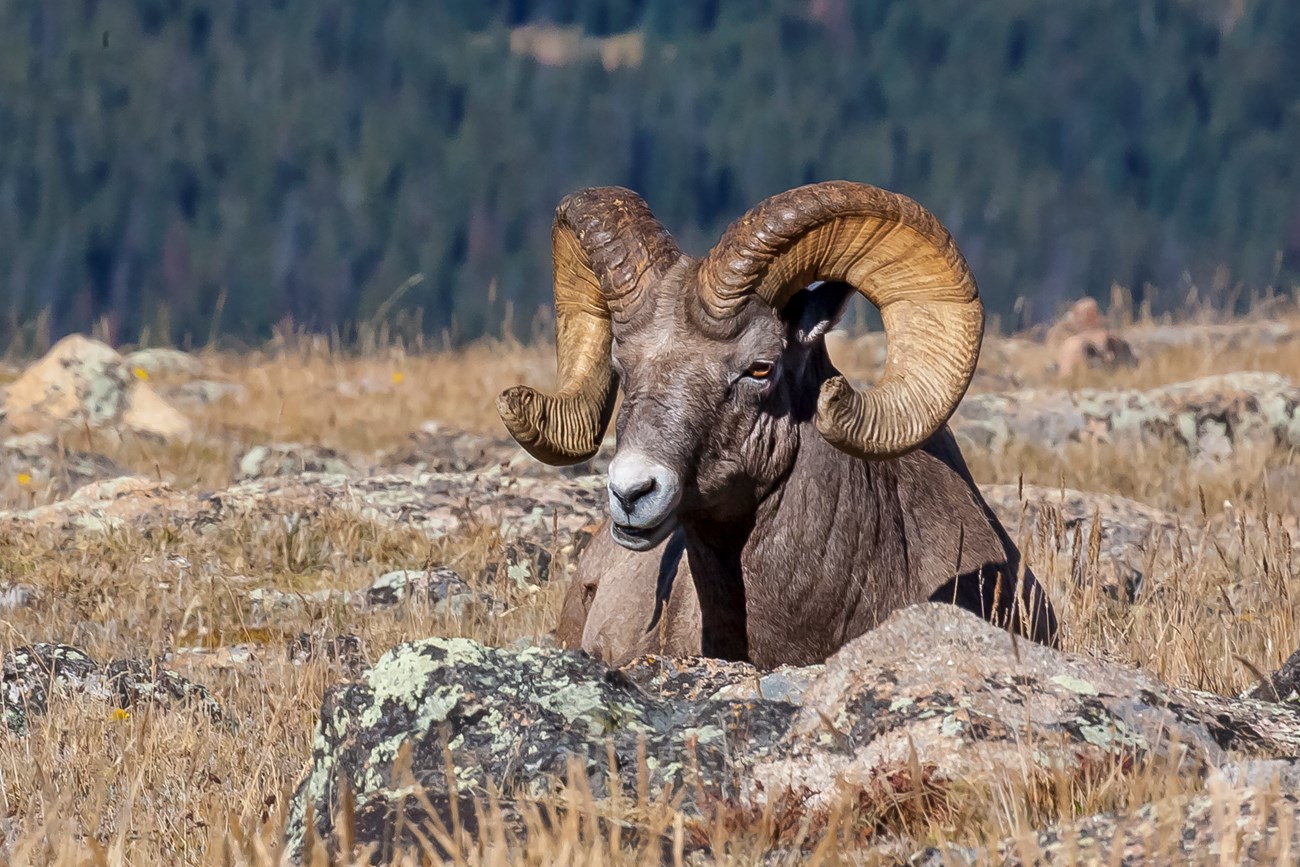Last updated: November 8, 2022
Article
Bighorn Sheep Population

The Question: What is the abundance and distribution of bighorn sheep in Rocky Mountain National Park? What are the survival rates of bighorn lambs?
Roughly 1,000 sheep existed in the park when it was established in 1915. Sheep numbers dropped to about 200 by 1970, and biologists believed it was due to inadequate low-elevation winter habitat within the park’s boundaries and exotic disease introduced by nearby domestic livestock. The population rebounded to nearly 700 in 1989, but anecdotal evidence suggested that sheep abundance declined significantly in the mid-1990s. Pneumonia, which can quickly kill over 50 percent of a sheep population, was one of the suspected culprits.The Project: Radio collar bighorn ewes, and track them over two years using radio telemetry, overflights and ground surveys. Estimate the size of the sheep herds and calculate lamb survival.
Dr. Gary C. White, Brett McClintock, and their crew from Colorado State University captured 59 adult ewes in the park with net-guns during the winter of 2002 to 2003. Researchers attached a radio collar to each ewe and estimated the population size using the mark-resight method. After collaring and releasing, they later relocated the ewes by overflights and ground surveys. They collected lamb survival data by visually identifying and counting lambs during the ewe relocation surveys. They analyzed the data with a statistical model called Bowden’s Estimator.The Results: Rocky Mountain National Park’s total bighorn sheep population in 2004 was approximately 360 sheep. Approximately 24 percent of lambs born in the park survive at least one year.
A total of 300 sheep make up the three distinct year-round herds west of the Continental Divide. The herds occupy separate ranges: the North Never Bighorn sheep congregating near Milner Pass. Summer Mountains, the South Never Summer Mountains, and along the Continental Divide. The ranges overlap at The Crater, a known mineral lick. A total of about 60 sheep make up the single herd east of the Continental Divide, located exclusively in the Mummy Range. All collared ewes east of the Divide used Sheep Lakes in Horseshoe Park as a mineral lick. At least 37 lambs were born to collared ewes, which resulted in a fertility estimate of 86 percent. The three-month lamb survival rate was 89 percent, and the one-year survival rate was 24 percent. Biologists expect declines in the bighorn population if reproduction and survival rates do not increase.Because this research indicated that declines may be occuring, additional research is underway. This includes a study to determine population trends using a non-invasive technique (genetic analysis using collected sheep pellets), analyzing mineral lick composition, and examining mineral levels in sheep.
This summary is based on published, peer-reviewed and/or unpublished reports available at the time of writing. It is not intended as a statement of park policy or as a defi nitive account of research results. For more information on the park’s research program, see www.nps.gov/romo
Written by: Travis Guy Date: August 2006 Updated: May 2009
